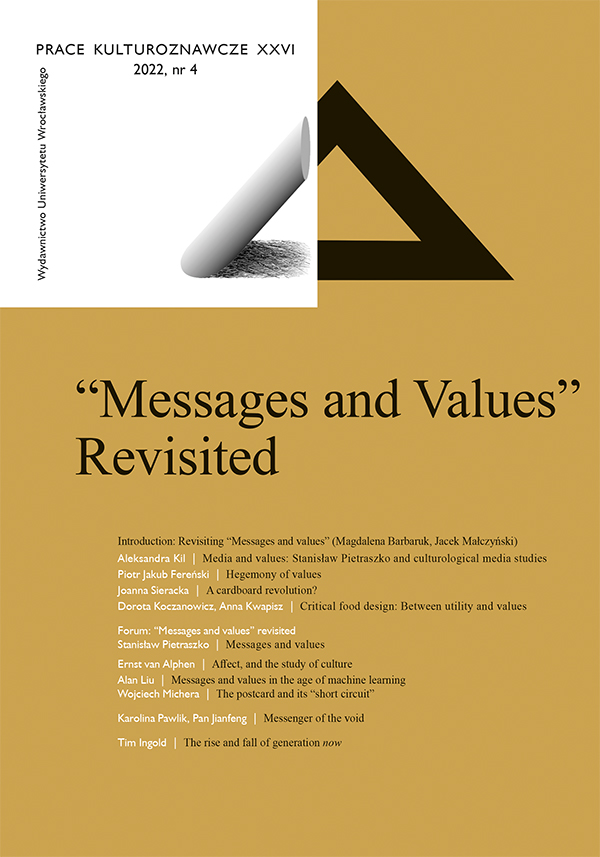

Articles

In my reinterpretation of Stanisław Pietraszko’s writings, I seek to identify their elements that exhibit some affinity with the concept of cultural hegemony, which germinated from entirely different ideological soil and has been developed under different historical circumstances. The idea of hegemony is usually traced back to Antonio Gramsci’s texts, though also to the work of other scholars inspired by Karl Marx’s thought, including the British philosophers who founded cultural studies. I argue that in distancing himself from all Marxism-underpinned theories, therein those that evolved toward semiology, Pietraszko was prompted not only by his philosophical views on the ontology of culture and possibilities of studying it but also by the social and political conjuncture in which he
developed his conception of culture (specifically, the socialist or communist regimes in Eastern Europe). I ponder how the two divergent models of understanding culture (i.e. culture defined in terms of ways of life and the idea of cultural hegemony) can be brought together. In my argument, I consider various media and communication forms in public space, such as murals, graffiti, posters, billboards, monuments and the like. It is in them that I see manifestations of values.